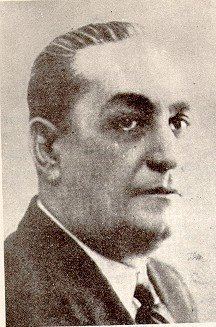Nationality Puerto Rican Name Luis Torres | Role Poet | |
 | ||
Died June 16, 1944, San Juan, Puerto Rico Education | ||
Roberto Sierra—Décimas for voice and piano (Poems by Luis Lloréns Torres)
Luis Lloréns Torres (May 14, 1876 – June 16, 1944), was a Puerto Rican poet, playwright, and politician. He was an advocate for the independence of Puerto Rico.
Contents
- Roberto SierraDcimas for voice and piano Poems by Luis Llorns Torres
- Early years
- Political career
- El Grito de Lares
- Death
- Legacy
- A puerto rico por luis llor ns torres
- References
Early years
Lloréns Torres was born in Juana Diaz, Puerto Rico, his parents, Luis Aurelio del Carmen Lloréns and Marcelina Soledad de Torres, were the wealthy owners of a coffee plantation. In Collores (a section of Juana Diaz), Lloréns Torres was always in contact with nature, which accounts for the love that he felt for nature and country. He always stated that he was proud to come from "Collores". His Catalan grandfather, Josep de Llorens i Robles, had immigrated from the village of Llorens, which belongs to the town of El Vendrell in Tarragona (Catalonia, Spain).

Lloréns Torres went to school in Mayagüez and Maricao. He went to Spain after he finished his secondary studies on the island and studied at the University of Barcelona where he began his studies. He then proceeded to study Philosophy and Letters at the University of Granada where he obtained a Doctorate degree in both disciplines and his law degree. In Spain he published his first book of poetic verses "Al Pie de la Alhambra", which was dedicated to his girlfriend, Carmen Rivero.
Political career
Lloréns Torres returned to Puerto Rico in 1901, married, and moved to Ponce where he established his own law firm (Nemesio Canales later joined his firm) and collaborated with the newspaper Lienzos del Solar. During this time he wrote some of his best works. He also met numerous poets like Julia de Burgos.
When Lloréns Torres returned to Puerto Rico he found a political situation completely different than from the one that he had left. Puerto Rico had been invaded by the United States during the Puerto Rico Campaign of the Spanish American War in 1898. This motivated Lloréns Torres to join the political Union Party of Puerto. The ideal of independence for the island. He transmitted his beliefs to the public through his poem "El Patito Feo" (The Ugly Duckling). He became a member of the Puerto Rican legislature and was named to the Camara of Delegates from 1908 to 1910 representing the municipality of Ponce. On February 8, 1912, together with Rosendo Matienzo Cintrón and Manuel Zeno Gandía, he wrote a manisfesto which stated that it was time for Puerto Rico to have its independence. That year Lloréns Torres, Rosendo Matienzo Cintrón, Manuel Zeno Gandía, Eugenio Benítez Castaño, and Pedro Franceschi founded the Independence party which was the first party in the history of the island to exclusively want Puerto Rican independence. Eugenio Benítez Castaño was named president of the short lived political party. In 1913, Lloréns Torres co-founded with Nemesio Canales La Revista de Las Antillas, a literary publication.
"El Grito de Lares"
Lloréns Torres' book, "El Grito de Lares", deals with the attempted overthrow of the Spanish government on the island with the intention of establishing the island as a sovereign republic. In the book he describes the revolutionary flag created by Mariana Bracetti. The flag was divided in the middle by a white Latin cross, the two lower corners were red and the two upper corners were blue. A white star was placed in the upper left blue corner. According to Lloréns Torres the white cross on the Revolutionary Flag of Lares stands for the yearning for homeland redemption; the red squares, the blood poured by the heroes of the rebellion and the white star in the blue solitude square, stands for liberty and freedom.
Death
Lloréns Torres died in Santurce, a sector of San Juan, Puerto Rico. He defended the ideal of Puerto Rican independence until the day that he died.
Legacy
The Government of Puerto Rico has honored the memory of Luis Lloréns Torres by naming a public housing project in Santurce after him. Among the other things that were named after him are an avenue in San Juan, a high school in Juana Diaz, and a children's academy in New York City. There is a bust of him in front of the high school named after him and there is a statue of Luis Lloréns Torres, sculpted by the Puerto Rican sculptor Tomás Batista, in the "Plazita Famosa" of Juana Diaz.
